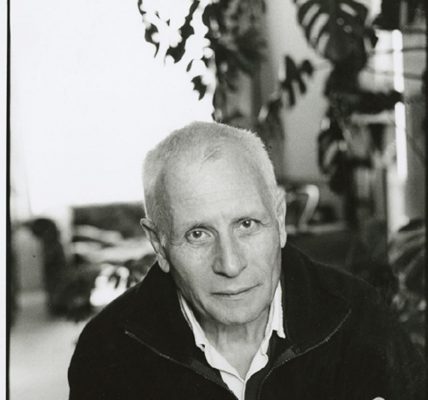How Masham's 'Peculier' governing body became known as the 'richest plum in Christendom'
With its lovely setting, artistic flair and cherished breweries, Phil Penfold takes a shine to Masham.
What’s not to like about a small town set in glorious countryside, which has a thriving artistic community, two breweries, several fine cafes and pubs, and a sheep fair? And, for a community with a population that is just under 2,000 in all, there’s an awful lot more going on.
The first person that we ought to mention is good old Maessa, who was an Anglo-Saxon and owned land hereabouts. Hence the name of the town, derived from Maessa’s Ham – the properties belonging to Maessa. And that’s where any other knowledge about this ancient ancestor ends.
The local church, St Mary’s, was one of the oldest in the county, even when the Vikings turned up, for it was founded in the seventh century. And the ground itself was a place of open-air worship a full century before that. There are carved stones from the original building woven into the fabric of today’s church, which sits on the south-east corner of the busy market square. The second main building which we can see today was begun in the architectural perpendicular style, and was added to in later centuries.
In 1855, in the middle of a bad storm, St Mary’s was hit by lightning and restoration was required. It was ordered by the then High Sheriff of US, one Octavius Henry Cyril Vernon Harcourt, who had spent 30 years in the Royal Navy, retiring with the rank of Vice Admiral.
Octavius not only poured money into St Mary’s, so that parishioners could return to their pews, he also built and endowed a church in nearby Healey and paid for the erection of six almshouses in Masham itself, which went up in 1858, and provided accommodation for the needy poor. He lived with his wife Anne at Swinton Park, and if he sounds totally immersed in acts of piety, he had his reward for all that church-building in financial and sporting terms when his horse Ellington won the Derby in 1856. He may have been from a huge family himself – with seven brothers and eight sisters – but he and his wife had no children, and their line ended with them. Grade II-listed Swinton Park is now owned by the Cunliffe-Lister family, and operates as a luxury hotel, featuring in the BBC series .
Masham is some distance from York, which made it rather difficult for the tax collectors during medieval times to levy their duties. They feared that they would be ambushed en route, so the archbishop of the day decided that the town could be given the right to govern its own affairs, and made it a peculier.
This “governing body” still exists and is made up (now as then) by two dozen men, the “four and twenty” headed by the incumbent of the church. It still has the right to rule on various issue that include “drunkenness, brawling, swearing, scolding, not bringing your children to be baptised, bidding the church wardens to do their worst when they order you to church – and carrying a skull out of a churchyard to lay under a person’s head to charm him or her to sleep”. It seems that, several centuries ago, some of Masham’s citizens were a pretty lively lot.
However, by not having to pay cash to York, the court became extremely powerful. There was once a saying in the north of England that “the Peculier of Masham was the richest plum in Christendom”.
When the Theakston Brewery was founded during the reign of William IV, its first beer was called Old Peculier – and is still immensely popular today. It was once affectionately known in the county as “lunatic’s broth”. The company (still run by the descendants of the founder, Robert Theakston) has a contract with St Mary’s to use the seal of the Peculier on its products.
Masham’s Black Sheep Brewery, however, has no such arrangements with any of the local farmers or their flocks. It was launched in 1992, when Paul Theakston decided to start up his own independent brewery. Black Sheep took over an old maltings which overlooks the town, and rapidly became so successful that it opened a visitor centre on the site. It had a hugely successful publicity coup in 1999 when it collaborated with the Monty Python team to produce a bottled beer called Holy Grail.
Like Theakston’s (which gives its name to the brilliant international crime writing festival in Harrogate), Black Sheep also sponsors all manner of local events. The two breweries contribute greatly to the local economy, both in terms of employment and revenue generated by visitors, and are much appreciated by discerning ale connoisseurs.
As with so many other smaller US communities, Masham once had a rail link, at the end of a short local branch line, which joined the main track at Melmerby, two-and-a-half miles away. It may not have carried that many passengers, but its goods trains certainly carried a lot of livestock. This tranquil rural scene was the centre of some excitement in 1908 when a locomotive hauling several wagons lost control, travelled through the goods sidings, across a road, and straight into soft earth at the far end of the yard. Thankfully, no-one was injured, and a report at the time revealed that the lad on the footplate was “unfamiliar with the line” and had decided to set off without a train guard.
Passenger traffic ceased as early as 1931, but the annual sheep fair still thrives. It is held every September and has been for many centuries. That fair (and other markets) has its origins in the fact that Masham is not too far from the two great medieval monastic houses of Fountains and Jervaulx, where the monks and their lay brethren tended to huge flocks of sheep, vital to the wool trade and the English economy of the day. The station house still stands, and is a private home, while the goods shed is a popular cafe and information centre.
For a small community, Masham also boasts several acclaimed galleries, all offering different genres of artworks and collectibles. Among them are the Uredale Glass Gallery (one of the longest-running small studios in the UK and showcasing the work of Tim Simon) and the Albion
Silversmith and Lapidarist. If you are in any way interested in wildlife, then a visit to the gallery run by Nolon Stacey is a must. Stacey is an internationally renowned artist, and his drawings (in pencil and charcoal) beautifully capture the essence of the birds and animals he sees around him.
On the outskirts of the town is the Marfield Wetlands nature reserve, which has plenty of hides, and there’s also Masham Leaves Trail which offers a gentle stroll along the River Ure. You can idle away your time in and around the Market Place by seeking out the sculptures on the Masham Swifts Trail – there are ten in all, each created by four local sculptors. They celebrate the annual arrival of these much-loved harbingers of summer.
Black sheep, birds, beer and big-hearted locals. A heady brew, if ever there was one.










